The introduction of automated electronics is a bold move by FOX, with the ultimate goal to make a create a more efficient ride experience without any input from the rider. No stranger to electronics, this is advanced technology FOX have experience in from their off-road vehicle division, now it’s our turn for the magical wizardry called Live Valve.
Watch our in-depth discussion below.
How?
Perhaps the biggest question on everyone’s minds; how does it actually work? Well, in a nutshell, the suspension’s compression can switch between closed/locked and open in just three milliseconds, after detecting a bump on the trail. Two sensors – one behind the fork arch and another the chain stay by the rear axle – continually analysing the terrain 1000 times per second, sending data to the controller unit mounted on the frame.
This is where things get especially interesting; the controller unit mounted to the frame has a three-axis accelerometer which can detect if the bike is climbing, traversing, descending or freefalling. Crazy, huh!? But why does that matter?
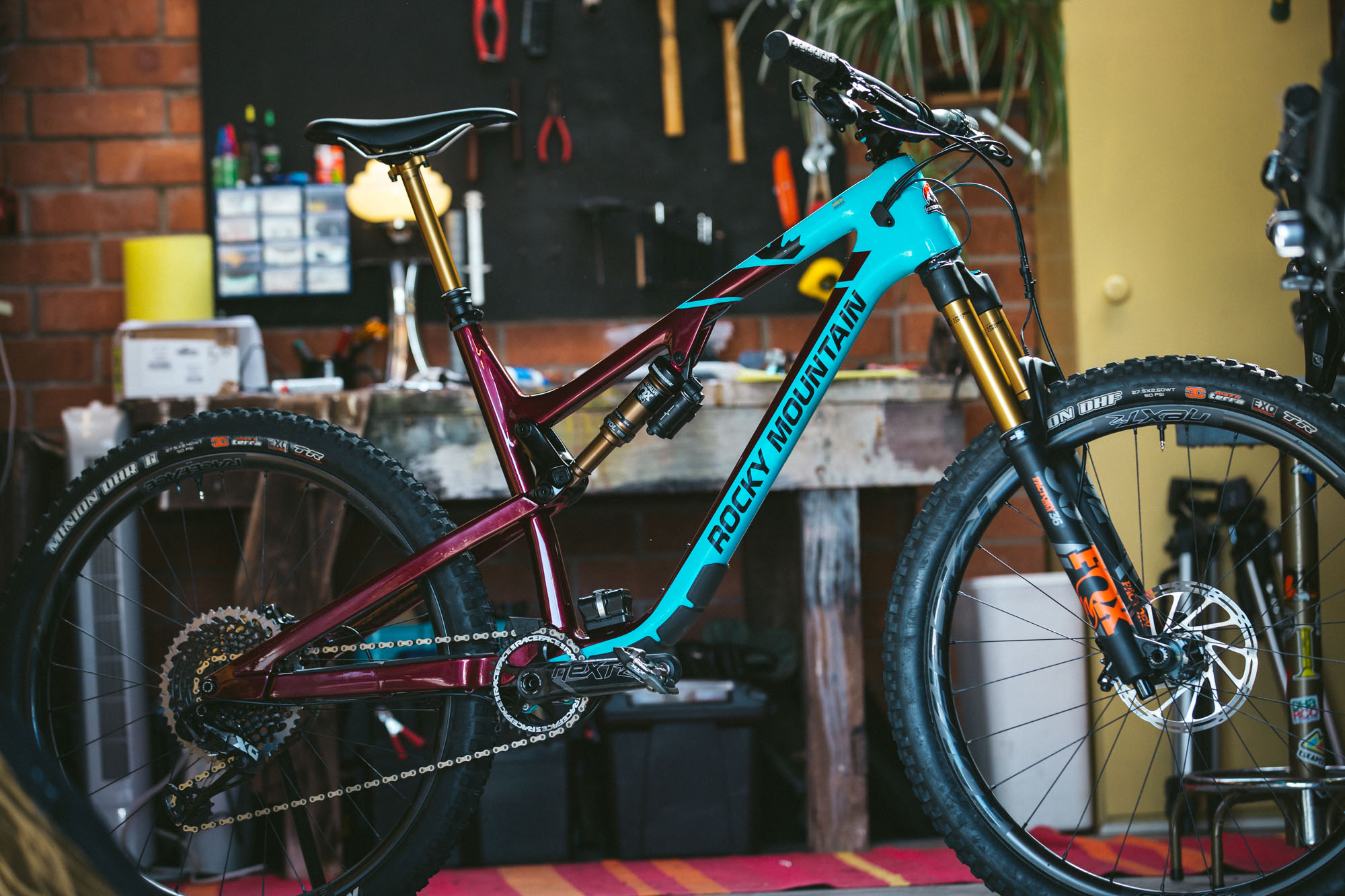
Well, with all that information fed to the microprocessor, the Live Valve not only opens and closes depending on how rough the terrain is to let your suspension do its thing, but it’s how long the valves stay open that is the key to the system’s smart operation. Hit a bump when you’re on a climb and the valves will open and close quickly, keeping things as efficient as possible. Hit a bump during a descent and the valves will stay open for longer, so the suspension is more active.
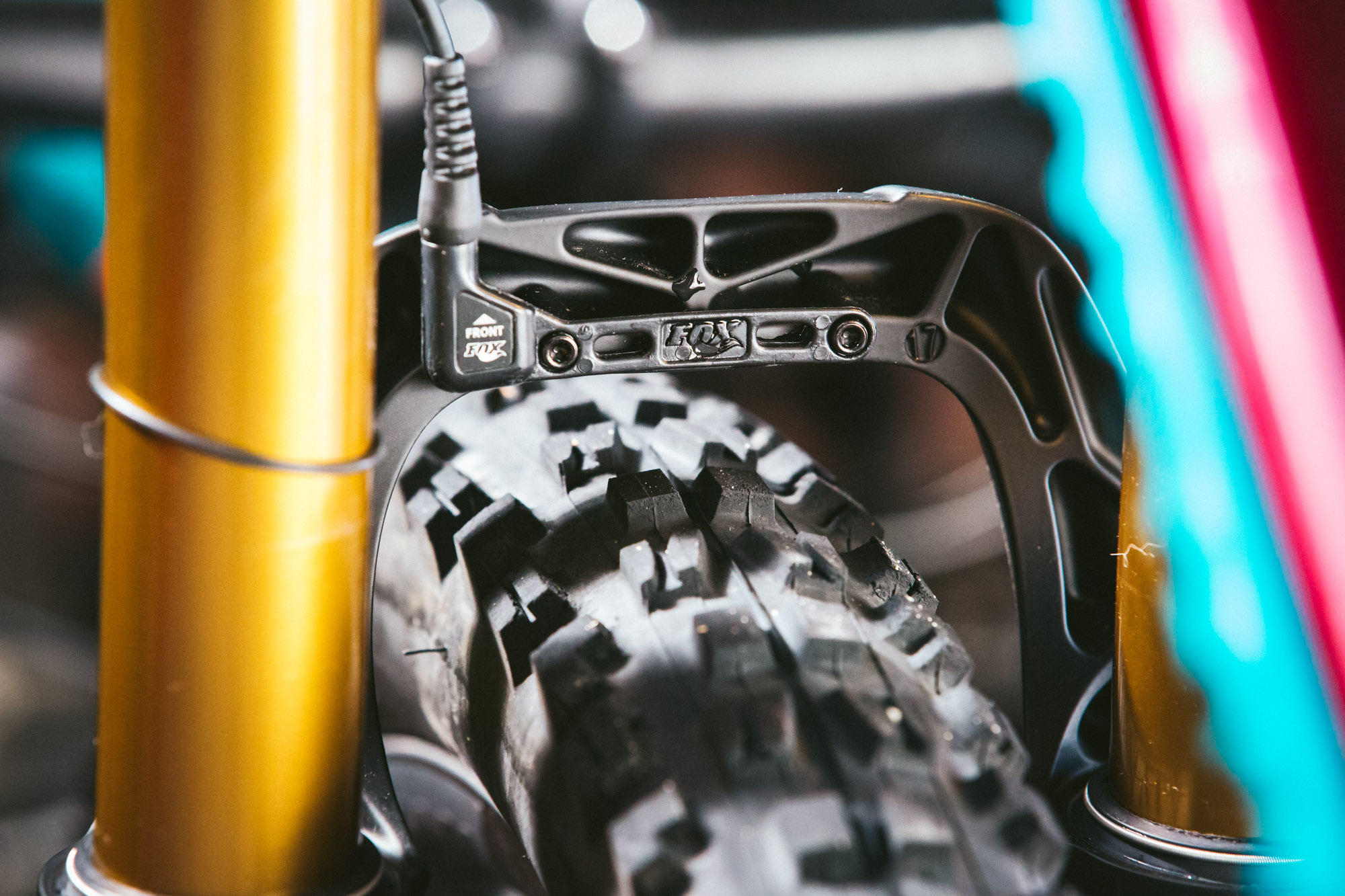


It’s all in the timing, giving you active suspension only when you require it, and efficient pedalling when you need it. Efficient when climbing and staying active when descending. Bingo!
Why?
As they put it, FOX wants to bring the efficiency of a hardtail to full suspension bikes, sorry FOX that’s never going to happen, though this is a very clever endeavour. They wanted to create a system that – while it sounds complicated – gives the rider a more simplified experience, doing the job of adjusting your suspension for you. It’s capable of changing your suspension settings way, way faster than a rider ever could do, all without you doing a thing – no lifting a thumb, pushing a button or flipping a switch.

Any similarities to FOX Terralogic, Lapierre e:i, Specialized Brain?
We’ve seen sensors and electronics in mountain bikes before, and we have had a lot of great experience with the e:i – a system developed in association with Lapierre and RockShox which is now not available on current model bikes, but which showed a lot of promise. While fundamentally along the same lines as FOX Live Valve, e:i was far from perfect and wasn’t widely accepted by the mountain bike community. From a performance standpoint, it was plagued with inconsistencies and durability, and the system just wasn’t fast enough in the speed it responded to terrain forces.
Tackling this critical issue of speed, Live Valve uses a latching solenoid to open and close the valves, which significantly faster and more consistent than a servo motor such as those found on the e:i system, requiring less power to operate and no additional power to stay in position.

The FOX Terralogic and the Specialized Brain systems are the two other directly comparable offerings. Both of these rely on inertia to open the valves, and again the response of this system is far from immediate, there’s always a degree of feedback and a clunky sensation you feel as you land or hit that first bump on the trail.
On or off, nothing in between, right?
With battery power, duration, size, weight and frame integration taken into consideration, FOX decided that Live Valve would only switch between two settings – open and closed. The compression adjustment is not variable per se, it’s open or closed nothing in between. Making a system that offered more compression adjustability would’ve drawn significantly more power, requiring a larger and heavier battery.
Interestingly, where FOX Live Valve is utilised in off-road vehicles, the system does offer variable compressions settings, purely because they have power on tap to do so, while a mountain bike relies on a rechargeable battery. mounted onboard. It begs the question, what about E-bikes with loads of battery power at their disposal?

Does it work?
Absolutely! After all is said and done, Live Valve functions just as it promises to. Our Rocky Mountain Altitude is a big travel rig, and subsequently no slouch on the descents. But with Live Valve fitted, it climbs and picks its way through technical singletrack like a much lighter and smaller travel bike. It brought phenomenal capableness to a bike that would typically forgo a solid dose of pedalling efficiency for descending aptitude.

Climbing.
Live Valve has the capability to make your bike climb with maximum efficiency as if it’s locked out, whilst still absorbing bumps to keep your tyres in contact with the trail. It’s pretty impressive how hard you can mash away on the pedals without the bike bogging down and sapping your energy. When climbing it only opens whichever suspension has detected the impact, not both.
Descending.
The Rocky Mountain Altitude is a great descender, we already knew that, but even in this area Live Valve offers benefits, particularly because you never have to remember to unlock your suspension before dropping into a descent.
Traversing.
Pumping your way through flatter terrain or pedalling out of the saddle the bike remains ultimately supportive, until that moment where your wheels detect a bump.
Freefalling.
Perhaps the biggest advantage over a mechanical inertia valve system like Terralogic or the Specialized Brain is how the bike responds when you drop down to earth, the accelerometer detects falling and opens in anticipation. The bike never spiked or felt harsh.
Can you hear it?
Yes, the light clicking sounds from the fork and shock are noticeable as you ride on the trail. You can hear both solenoids latching back and forth “click, click”, you can even hear when the valves open for different times, longer when the bike is pointed down and the clicking sounds are closer together when ascending.
It’s a little off-putting at first, but as we found with the very obvious noise from electronic shifting Shimano Di2, we got used to it very quickly. It’s not loud enough that your mates will hear it from behind you, that’s the foremost point.
Can you feel it?
If you can feel it you’re certainly well in-tune with your bike as many of us didn’t notice a thing. Some Flow testers commented they could feel the first bump in a sequence was slightly harder than the following; others couldn’t detect a thing.
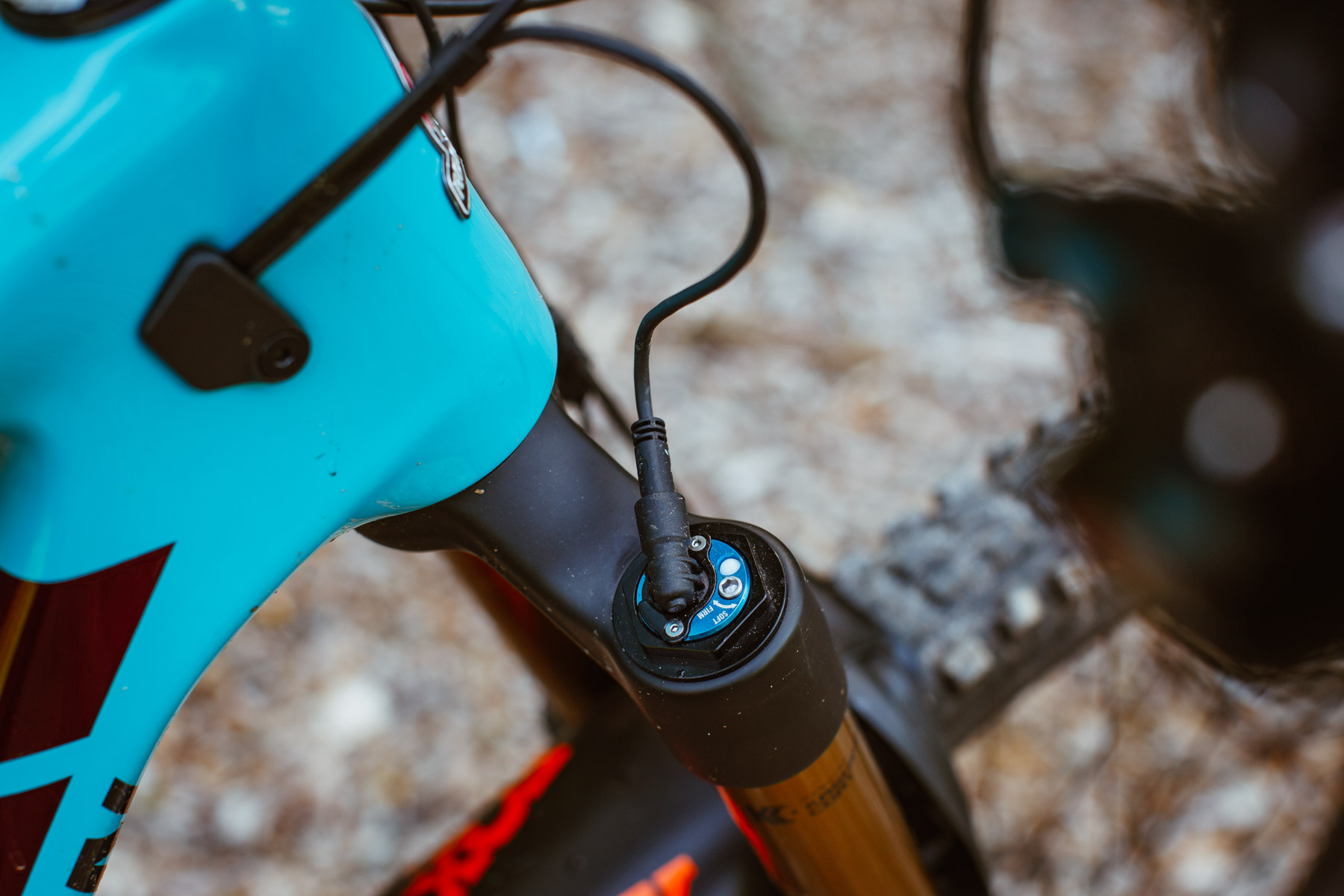
What bike or what type of rider, for racers or weekend warriors, for XC or Enduro?
This could be the most significant discussion topic of them all, who is this best suited to? At the Live Valve launch, the test bikes ranged from 90mm up to 160mm of rear travel, XC race bikes to burly enduro rigs. We’re in the mindset that if something is of benefit to a racer, it’s also of benefit to the everyday rider too.
We can see it making so much sense on a lean and mean cross country race machine, where the system can adjust the suspension faster than you can, milking the bike for more performance. And on the other hand, it’ll bring a real boost of efficiency to any bike, i.e. you might hit the lockout on your suspension a few times each ride, this stuff does it 1000 times per second, that has to be of benefit when pedalling a suspension bike around.
Will we see this lightning-fast technology in downhill racing? Remember the Cairns World Champs where we saw riders fitting remote lockouts to their rear shocks for the long and flat pedalling sections of the track? Aaron Gwin accidentally forgot to unlock his suspension, riding from the whoop section in lock mode, ouch! We can only imagine what Live Valve could bring to that particular situation.
From the future, or from somewhere else?
Unlike its main rival, RockShox, FOX has its fingers in many pies out of the cycling world. The FOX motorsport division has already played host to this whole shebang, with Live Valve technology available in the side-by-side UTV market and the new Ford Raptor mega-truck. While they have four wheels, and we are mainly concerned about two, the fact is that they have a whole team of brainiacs capable of pulling it off.


What bikes will have Live Valve in the 2019 season?
Not many, at all! At this stage, only the Giant Anthem Advanced Pro (AUD $10999) and the Pivot Mach 5.5 will be the only bikes available in Australia with Live Valve. Scott will be offering the Genius Ultimate with Live Valve but is not a model currently coming to Australian Scott dealers (though we believe this can be placed as a special order). Niner was also a brand we believe might offer a Live Valve bike in the near future.
Can you buy Live Valve for your bike?
FOX plans to offer aftermarket Live Valve kits for the Scott Spark, Rocky Mountain Altitude, Instinct, and Thunderbolt. A kit will include the fork and shock and costs are estimated for around USD $3000 – $3250, so you’re not going to do it on the cheap. Keep an eye on the FOX website for updates on availability.
Big bucks!
There’s no getting around it. This stuff is expensive, and that’s going to be a big hurdle to overcome. At this stage, it looks like FOX Live Valve adds around AUD $2000 to comparable bike without there system. For instance, last season the Giant Anthem without Live Valve was $8999. Now, it’s $10,999 with Live Valve. Yeah, crazy expensive!
Can you tune the controller unit yourself?
The ‘brain’ of the system is almost infinitely adjustable. Using dedicate software, it is possible to tune the living daylights out of the thing, but at time of publishing, the software will only be available for OEM customers and FOX service centres. Sorry!
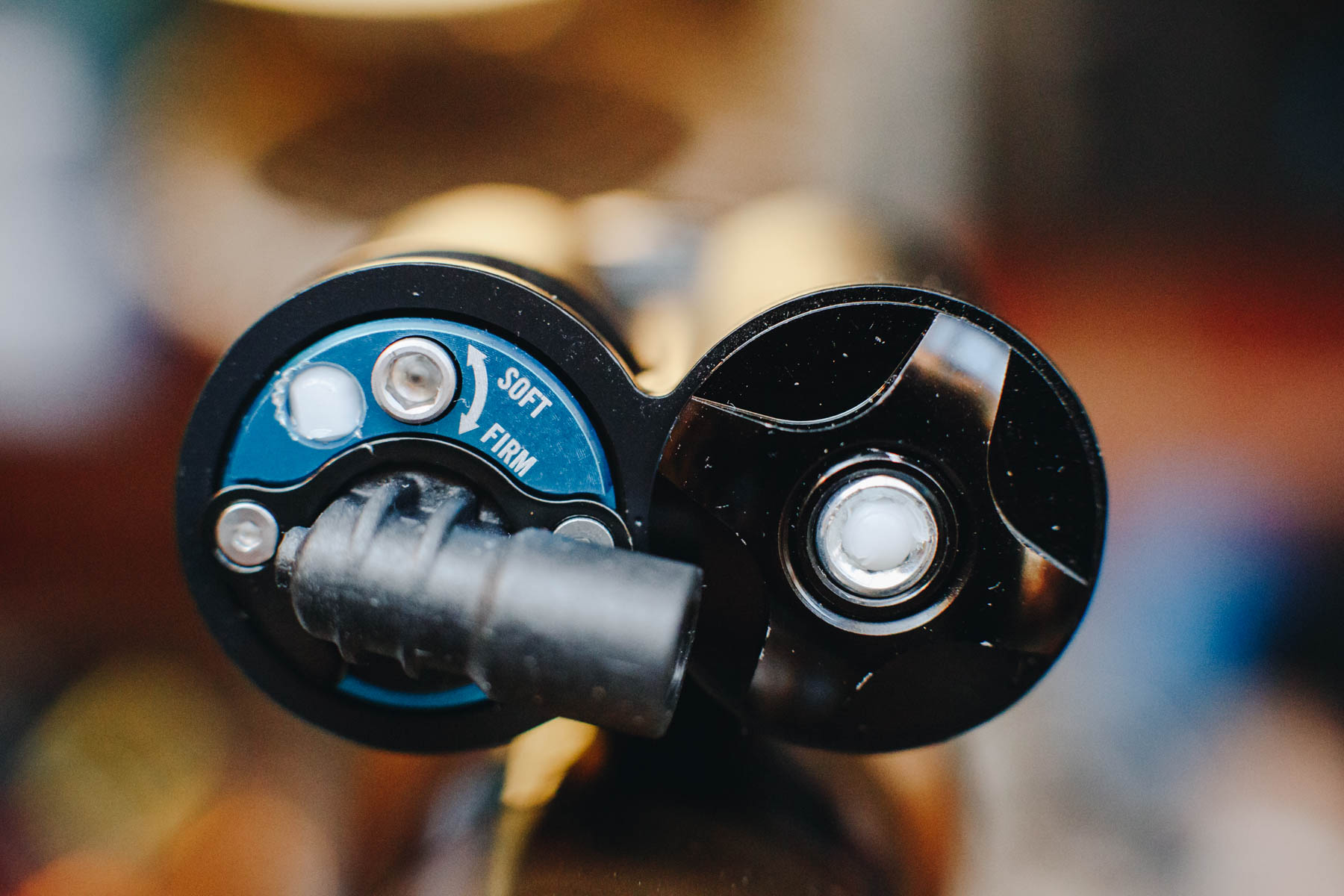


Is it heavy?
On the Scott Genius, it only adds a mere 144 grams over the stock Twinloc cable actuated remote lockout. So, no, the weight is not significant especially versus the efficiency benefits it brings.
How long does the battery run for?
We put plenty of hours on our test bike over three months, and on the classic janky technical singletrack around our local trails of Newcastle and Sydney’s Northern Beaches we got around 5 three-hour rides on the bike before the low battery warning came on, so keeping the battery is something to keep in mind.
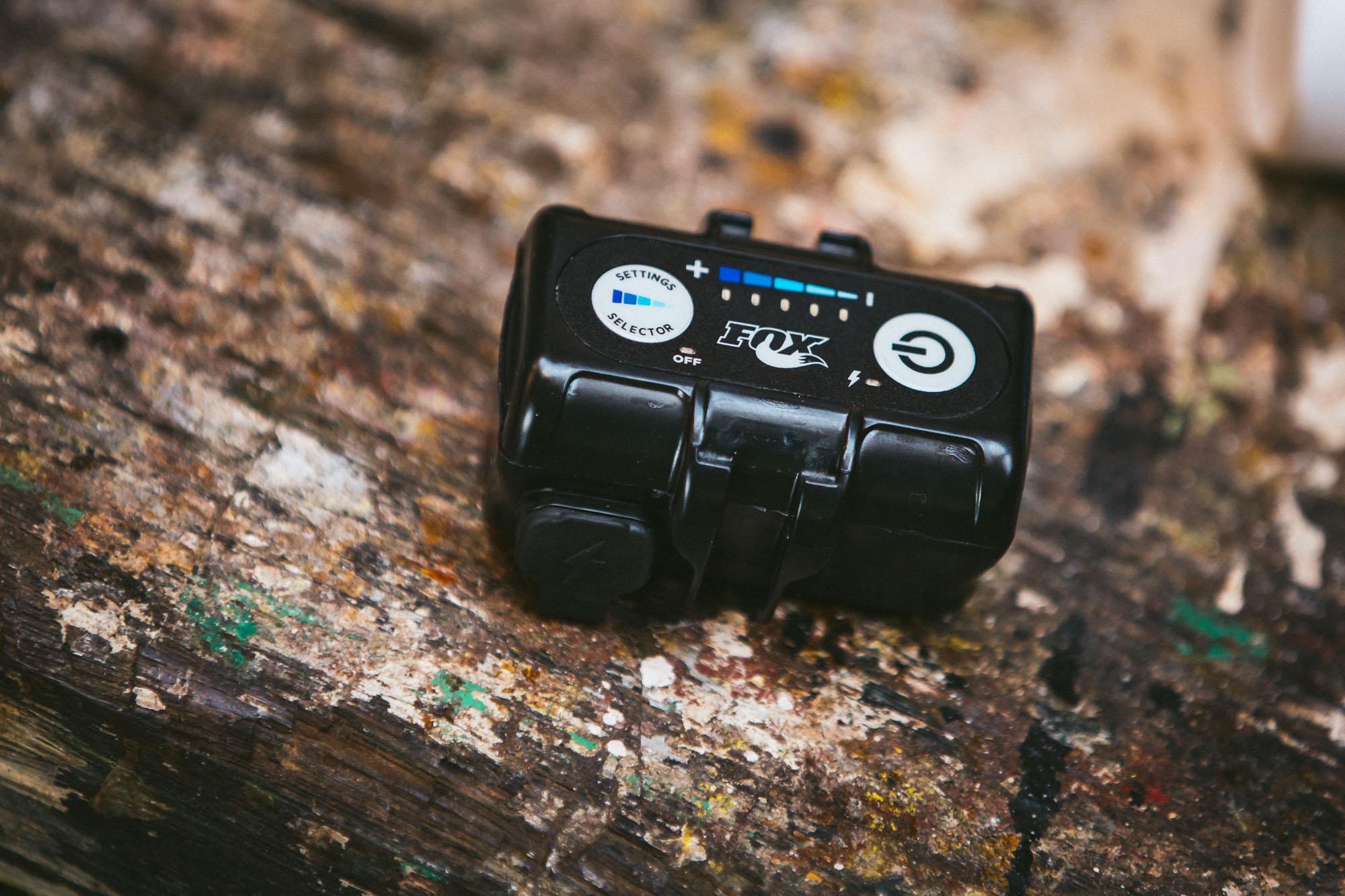

Charging is easy, we found it easiest to remove the battery and plug it into a USB port rather than finding a cable arrangement that would reach from the bike to a power source.
Final word.
We are super impressed by Live Valve, what the team at FOX has done to bring this technology to the mountain bike world justifies serious kudos, we can’t even begin to fathom how many factors have been taken into consideration for Live Valve to come to market.
It has the potential to change everything, and as we said earlier it’s way more exciting than most of what the the mountain bike industry serves up (“Oh, longer slacker, internal cable routing, compatible with 26″ AND 29”!). When you factor in sensors, accelerometers, algorithms and all the other mumbo jumbo, the possibilities seem boundless to us right now. Where will this technology take us? Will FOX be the only ones to explore the world of automated things sensor bits? Hmmmm. So many things to ponder!

We went to the launch in the USA, brought the Rocky Mountain home with us, spent months riding it, musing over it, worked further with FOX to get comfortable with the compression tune to suit the Rocky Mountain Altitude, and still, we are somewhat divided over the whole thing. Yes, It delivers unthinkably fast adjustment to your suspension without any remote switches, and that we applaud. But while we are impressed by its operation and execution, we’re still not 100% convinced we’d want the system on our own bike, largely because of the savage cost and the ‘fuss’ it adds.
FOX does a brilliant job of making ‘conventional’ suspension, and with the performance of many excellent suspension systems already, we have to wonder do we need Live Valve on top of what is already available? That said, we really want to experience the system on the 2019 Giant Anthem Advanced 0, as it’ll surely be the most popular Live Valve equipped bike in Australia and is bike we know well, so we’ll be able to make direct comparison of the performance versus the non-Live Valver version. Stay tuned for a follow-up review soon.
We now wait in earnest to see how the mountain bike community respond to all of this and wonder if it will be a popular addition to the mountain bike realm. Has anyone watched Terminator 2 recently?



